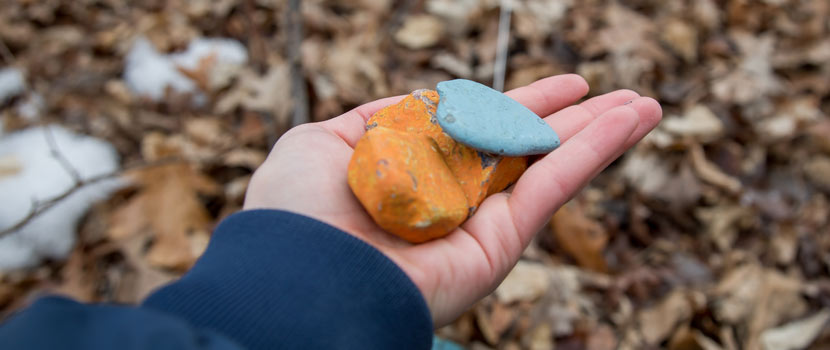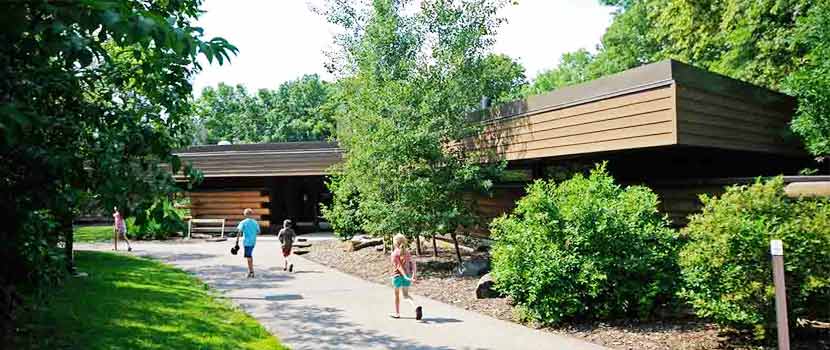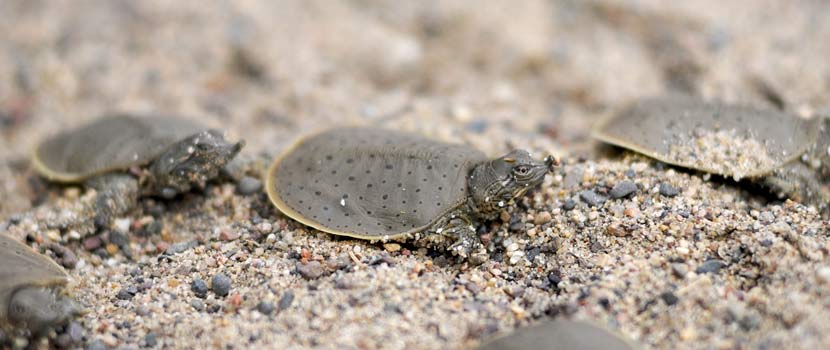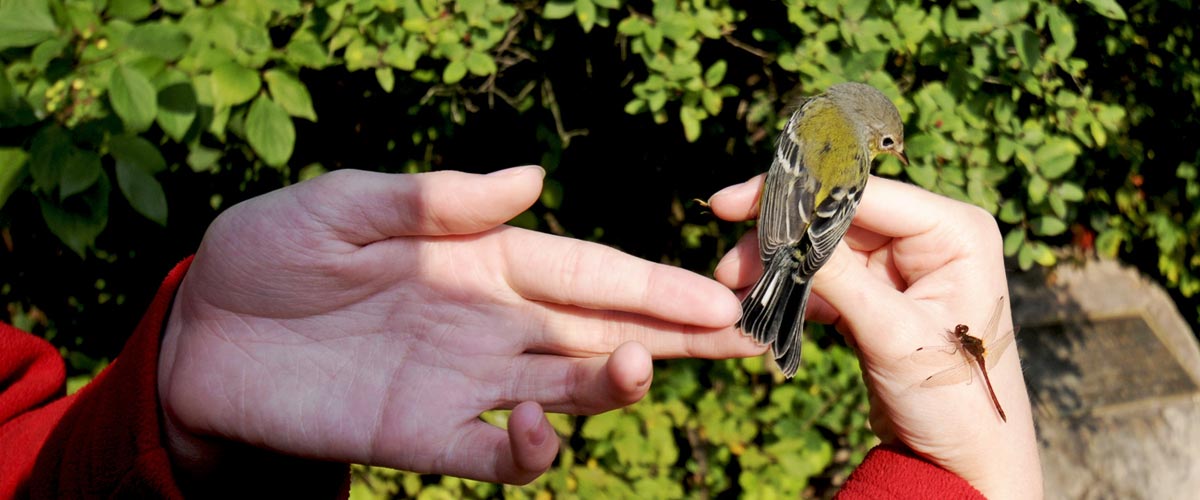
Nature's Classroom for 50 Years: Bird Banding at Lowry Nature Center
By: Allison Neaton
May 13, 2019
Category: Resource Management
One of the key natural gems of Lowry Nature Center is its diverse population of bird species.
There have been 242 species of birds reported in the park, which is an astounding number when you consider the Minnesota DNR lists 246 birds as breeding in the state. It should be no surprise then that the longest ongoing program in the 50-year history of the center is bird banding.
What is Bird Banding?
Bird banding is a scientific endeavor to catch wild birds and affix small, harmless, metal ID rings around their legs.
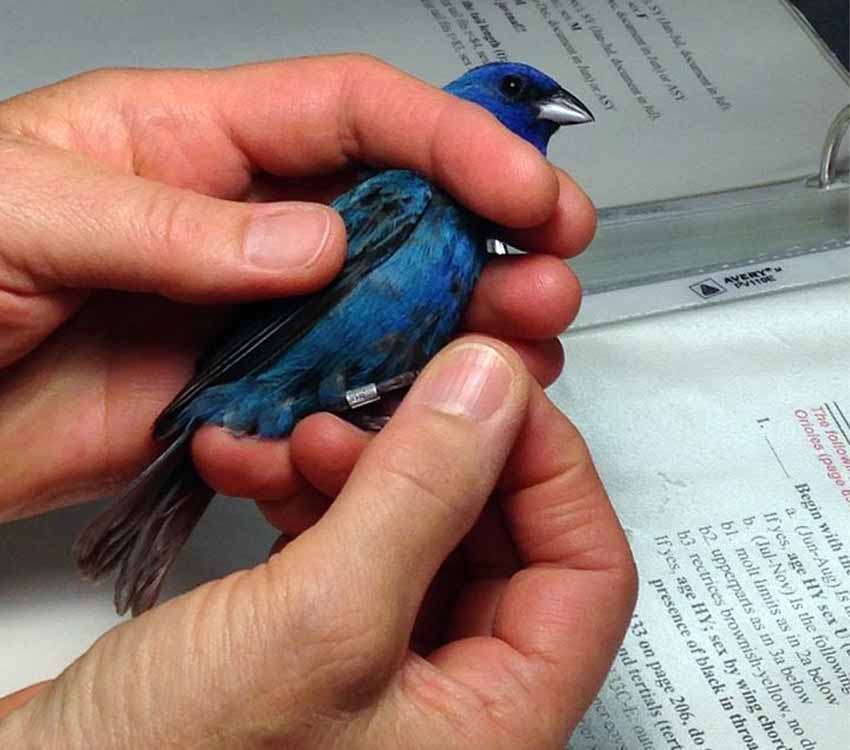
Jim Gilbert started banding American tree sparrows in the park back in 1969, the first year the center was open. The first naturalist, Kathy Heidel, also started banding in 1969, after visiting the Lee and Rose Warner Nature Center and was impressed with how they were using it to teach children.
Kathy recruited volunteers to help with the effort and some of those volunteers are still with us today, which makes bird banding one of longest running volunteer programs in the entire Park District.
Four of the current volunteer members of the bird banding team have been volunteering with Three Rivers for over 35 years. Many of the bird banding volunteers over the years have been nominated for and received the Distinguished Volunteer Service Award from the Park District.
Bird Banding and American Tree Sparrows
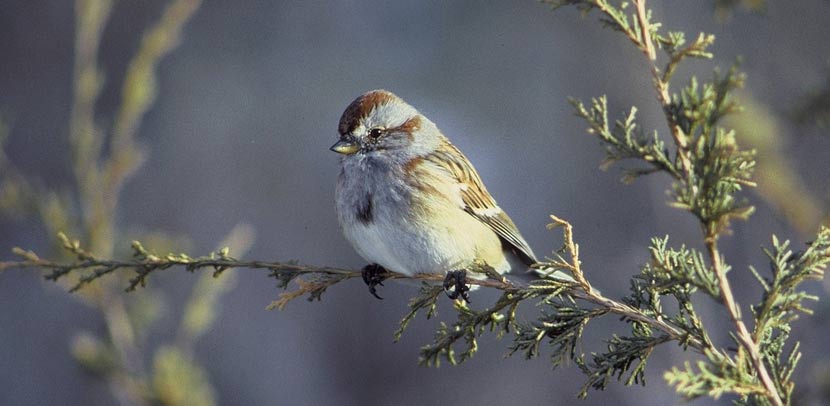
Kathy’s original study interests were whether birds had preferences for which feeders they were using at the center. The study of American tree sparrows as an early bird of interest somberly paid off when the horribly cold and snowy winter of 1983-84 severely reduced their numbers.
Kathy wrote in her journal about how terribly cold it was that December. She recorded nearly 49.9 inches of snowfall by the official start of winter on the 21st of December.
Nationwide, 125 low-record temperatures were broken Christmas Eve and Day. The average temperature for December in Minneapolis was just 3.7 degrees F and December 1983 became the coldest and snowiest December in the twentieth century.
As if that wasn’t enough, the cold snowy winter continued into the New Year — 98.6 inches of snow fell in the Twin Cities that winter.
Similar conditions existed across the country and the following winter was similarly tough. In 1985, 90 percent of the citrus crop in Florida was destroyed by cold as the severe weather extended across the country. The effect on the American tree sparrow population was devastating and Lowry banders documented the decline.
A devastating event like the combination of cold and snow we had in the 1980s can have long-term repercussions.
The number of American tree sparrows banded plummeted to zero after those tough years and as of the winter of 2018-19, we tentatively feel like we may be seeing the population climb back up. As I write this, a flock of American tree sparrows is feeding under the feeders, a sight that has been rare for the last 35 years. We banded five of them in 2018 but there were dozens more that never ventured toward our nets or traps.
Along with tracking long term population trends, banding can also tell us about bird lifespan and even migration patterns.
Notable Birds
- In 1993, we re-caught a hairy woodpecker whose band was unreadable because it was so old and worn. The band was removed and sent to a lab to be etched so the number could be recovered. When it was read, we found the bird was at least 12 years old.
- In 1993, we re-caught a white-breasted nuthatch that was at least 8 years old.
- In 1994, we re-caught a blue jay that was at least 11 years old.
- In 2016, we re-caught a red-winged blackbird that was at least 13 years old.
- In 2018, we re-caught a black-capped chickadee that might turn out to be a world record for age — it was at least 11 years old.
- In 2018, we re-caught a red-eyed vireo that had been banded a Lowry four years earlier. This bird was caught on nearly the same day in the same place. It was amazing to think it had migrated to South America each winter and made the flight back and forth eight times since we had seen it.
Want to get involved?
If you’d like to be a part of this ongoing research project you can drop into one of our monthly public banding programs the third Saturday of every month (except December) from 9 AM-12 PM.
At the May 18 banding we will celebrate 50 years of Lowry and in addition, the banding team will share some stories from over the years.
About the Author
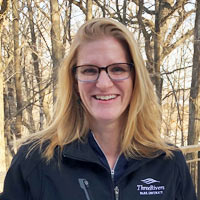
Allison Neaton has been the Outdoor Education Supervisor of Lowry Nature Center for 11 years and has worked for Three Rivers Park District for 18 years. She is inspired by the legacy of those whose vision created Lowry Nature Center and is challenged every day to inspire others to connect with nature. When she’s not playing at Lowry, she enjoys camping with her family, photography and relaxing in her backyard under big oak trees.
Related Blog Posts
Nature’s Classroom for 50 years: Lowry Nature Center’s Oldest Tradition
By: Brianna Rodgers
Lowry Nature Center has been connecting families with nature through a rock hunt for almost 50 years. Explore how Lowry's oldest tradition has changed over the years.
Nature's Classroom for 50 Years: The Dream of Lowry Nature Center
By: Allison Neaton
Lowry Nature Center turns 50 years old in 2019. Discover how the dream of one man became a reality and how Goodrich Lowry helped shape the future of what is now Three Rivers Park District.
9 Things We Learned from the Medicine Lake Urban Turtle Project
By: John Moriarty
Where do spiny softshell turtles go after nesting on the beach at French Regional Park? How far do softshell, painted and snapping turtles travel in the water? Are they active in winter or affected by water quality? Find out what we learned during the Medicine Lake urban turtle project.
